Anzac Day 2023: Prince William’s touching tribute in Hyde Park
As Australians gathered across the world, royalty joined the commemorations with the Prince of Wales and the Duke of Gloucester attending a Dawn Service in London.
National
Don't miss out on the headlines from National. Followed categories will be added to My News.
As Australians gathered across the world to honour the nation’s fallen on Anzac Day, royalty joined the commemorations in London with the Prince of Wales and the Duke of Gloucester attending a Dawn Service in the British capital.
Dressed solemnly in black, Prince William and the Duke, the Queen’s cousin, were greeted on a crisp Tuesday morning for the Dawn Service at Wellington Arch by the Australian and New Zealand high Commissioners.
Thousands of people waited in the dark before the start of proceedings, which marked 108 years since the day was first marked in London.
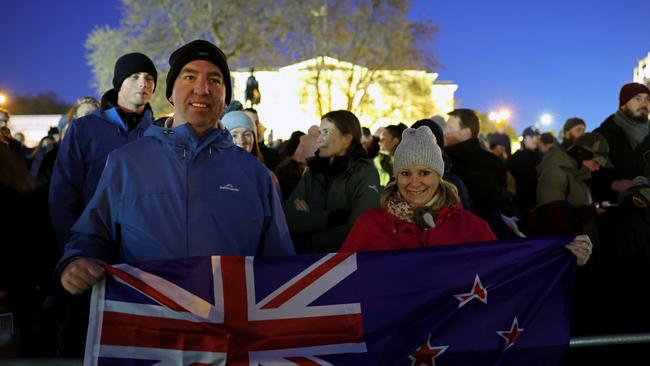
The second-in-line to the throne, who represented the King, struck a solemn figure as he laid a wreath of fresh poppies at the right column of Wellington Arch to honour Australia and New Zealand’s war dead.
That wreath contained a signed, handwritten note. It read: “In memory of those who made the ultimate sacrifice for our freedom.”
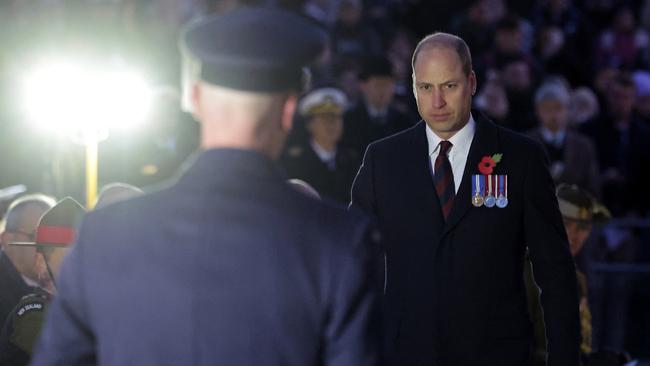
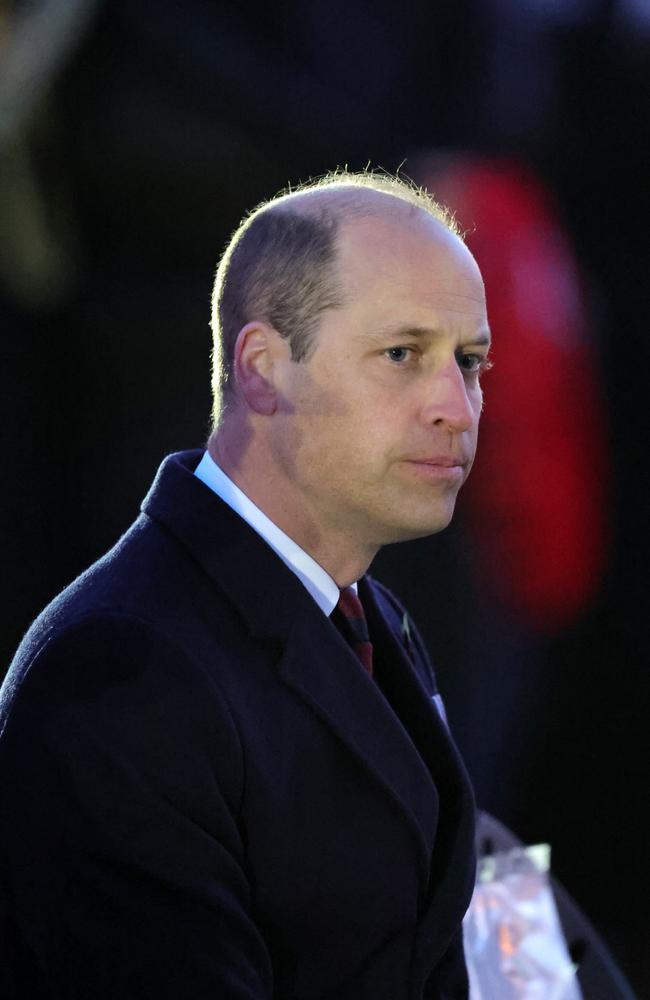
In his address, Australian High Commissioner Stephen Smith said Anzac Day represented inspiration drawn from the sacrifice – “a sense of humour in adversity, an egalitarian spirit, a defiance against the odds”.
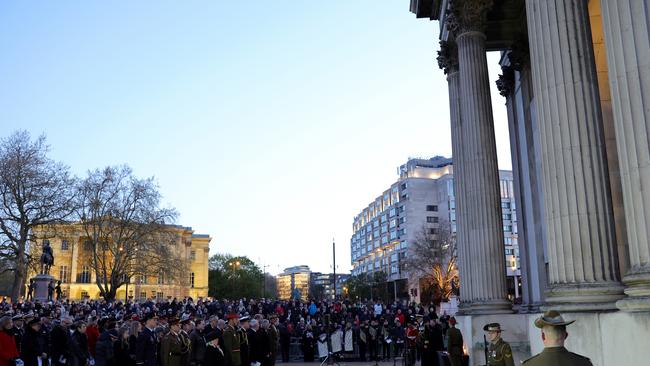
“A fair go for all, not leaving behind the weak and vulnerable and a sense of optimism of what we can achieve,” Mr Smith said.
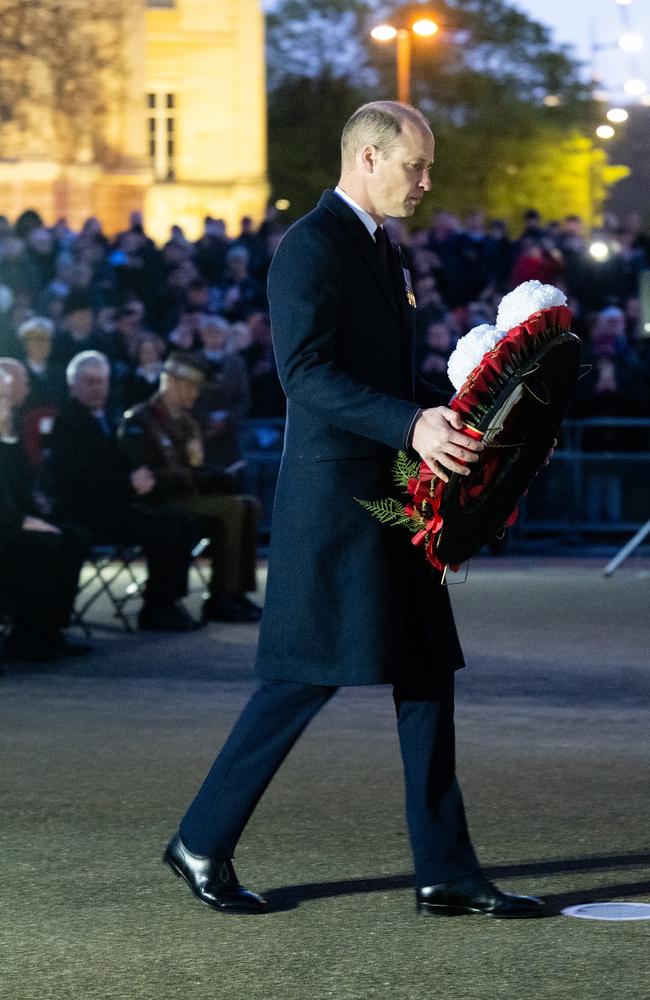
After the readings, the crowd fell silent as the Last Post was played, followed by a moment’s quiet and a military reveille.
Cantor Cassandra Wright sang the national anthems as the sun rose.
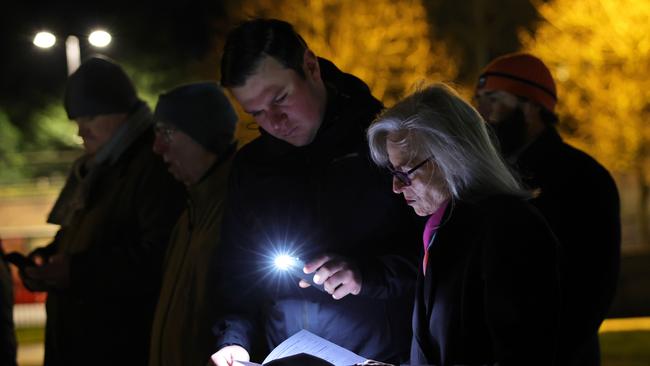
The service concluded when Prince William signed the book of remembrance while music resonated from a Didgeridoo. A Māori waiata (song) was performed by London-based Ngāti Rānana.
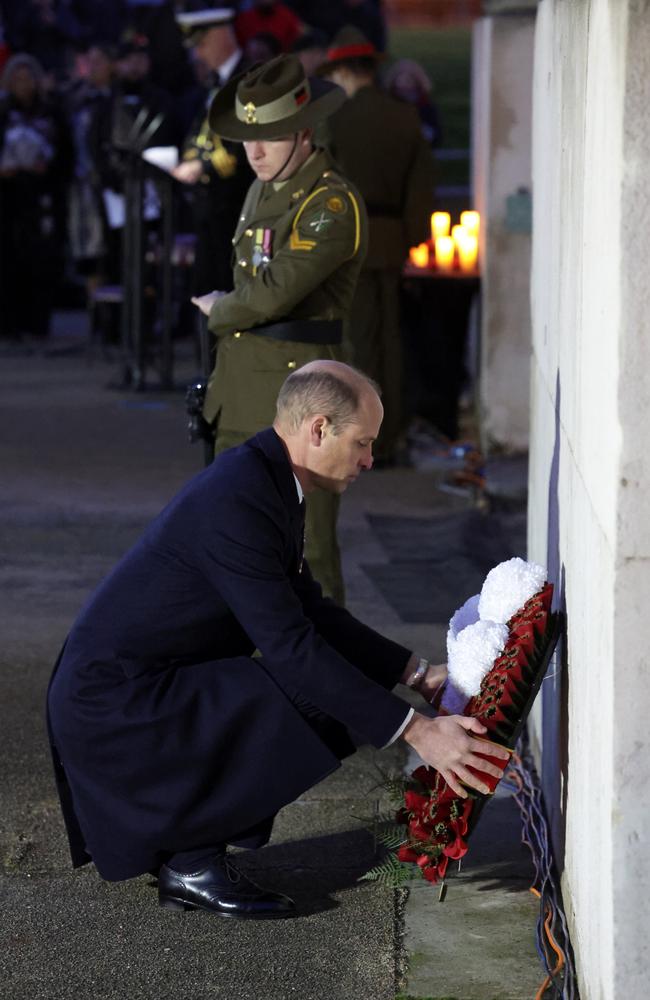
Later the Duke, 78, a full-time working royal whose patronages reflect his professional and personal interests, attended the traditional service of commemoration and thanksgiving at Westminster Abbey.
The church service included addresses from the Dean of Westminster, and the Australian and New Zealand High Commissioners.
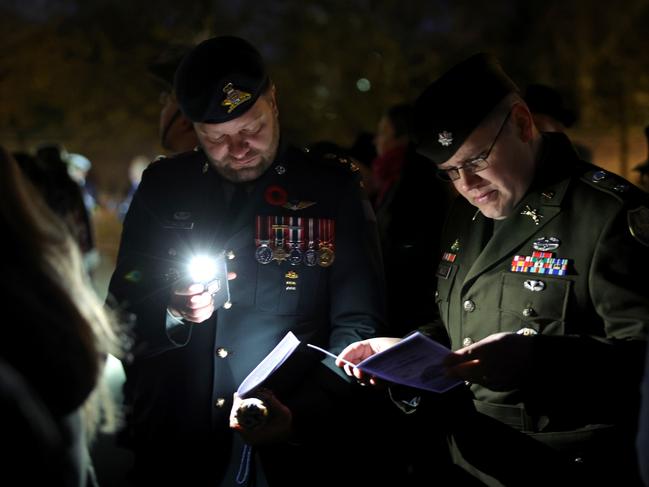
GALLIPOLI DAWN SERVICE REPLAY
Australians gathered at Anzac Day dawn services and parades across the nation to honour those who served.
Inclement wet weather did not deter a huge crowd from paying their respects at the Gallipoli Dawn Service, where Anzac troops landed on the beaches below them 108 years ago.
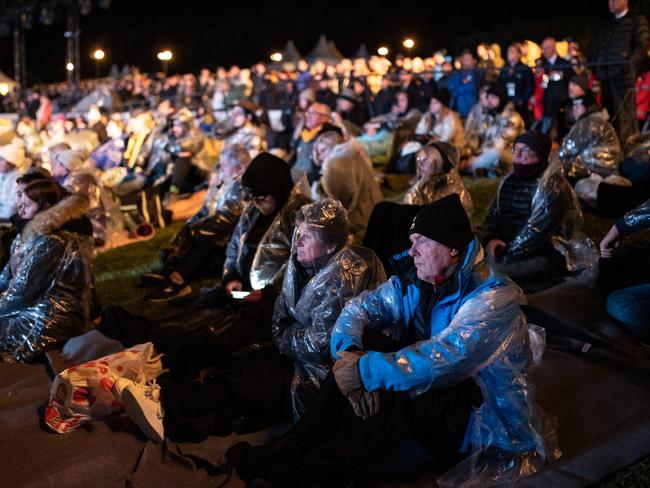
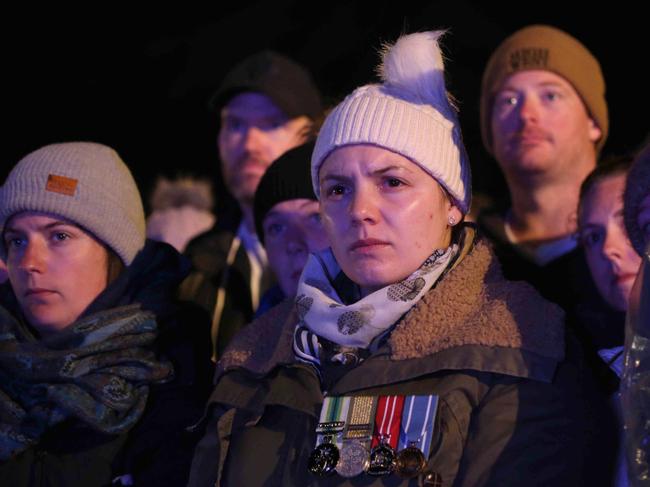
Traditional music from Maori and Aboriginal cultures opened the ceremony, which was attended by dignitaries and Australian officials including Minister for Veterans’ Affairs and Defence Personnel Matt Keogh.
Lieutenant General Greg Bilton delivered the call to remembrance in front of more than 1000 people gathered on the Gallipoli Peninsula, many of whom were dressed in warm jumpers, beanies and ponchos.
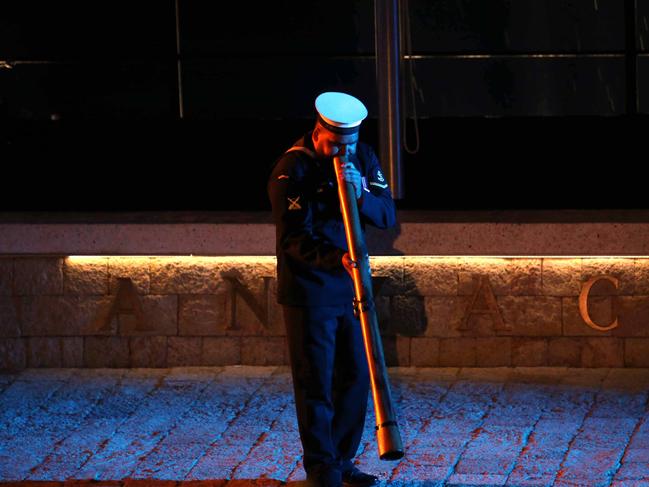
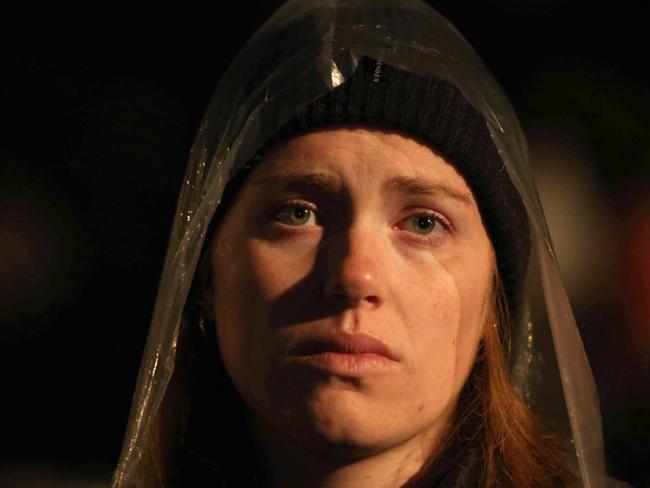
New Zealand Minister for Defence Andrew Little delivered a commemorative address. He started his speech by expressing his “heartfelt condolences and deepest sympathy to the people of Turkey affected by the devastating earthquakes” earlier this year.
“It is a testament to the good will between our nations that in the aftermath of that natural disaster, the Turkish government and people have once again gone out of their way to make us so welcome at this time,” he said.
“Those of us who saw the footage of the aftermath of the earthquake were struck by the courage and determination of the first responders.
“As we gather here today we are reminded of the bravery and self-sacrifice of the unarmed medical staff belonging to both sides on the battlefield that stands behind us.
“They helped friend and foe alike with a great humanity and care.”
Watch it below:
Minister Keogh also delivered a speech as part of the service, thanking current and past defence personnel and their families for their “sacrifices”.
“In Australia, New Zealand, Asian and Europe, and indeed across the globe, as the dawn breaks on Anzac Day we come to places like these solemnly, silently and respectively. We do not come to glorify war. We come to acknowledge, pay respects and to honour all who sacrificed life and limb, mind and spirit, in battle,” he said.
“Today we gather to remember the sacrifices of so many ordinary Australians, caught up in extraordinary events throughout our history.”
He too expressed sympathies for the people of Turkey affected by the recent earthquakes.
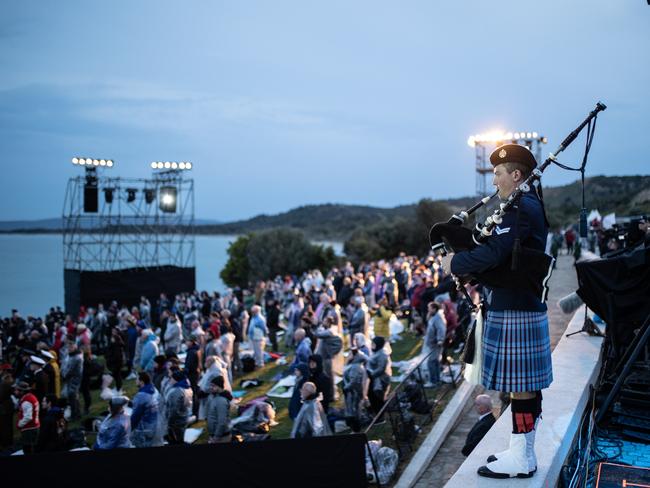
The landings at Gallipoli on April 25, 1915 have gone down in Australian history - and in the national psyche - as the first time our then-young nation was involved in a major action on the world stage.
Despite the bravery and will of the soldiers, the eight-month campaign was a failure. Conceived as part of an ambitious multinational attempt to force the Ottoman Empire out of the war, it became a stalemate that cost 26,111 Australian casualties, including 8,141 deaths, and overall around 250,000 casualties on both the Allied and Turkish sides.
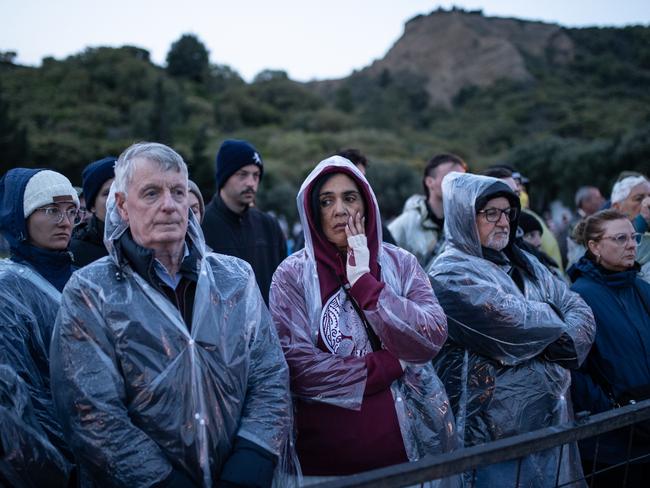
Many argue its most successful moment was the famous evacuation in December 1915, when thousands of troops were withdrawn under cover of darkness with very few casualties, in a meticulously planned operation.
By now veterans, those Anzacs were shipped to Egypt and then, joined by thousands more reinforcements, to the Western Front where, between 1916 and 1918, over 46,000 would die and more than twice that number be wounded.
ANZAC NURSE SHOULD NEVER BE FORGOTTEN
Ruby Dickinson’s small grave could not be more underwhelming, given the enormous courage and compassion attached to her short life as an Australian staff nurse caring for soldiers transferred from the front in World War I.
Dickinson was a robust, big-hearted sister working for a time at military hospitals that took in Australian casualties that had enlisted to help Britain fight Germany and the Ottoman powers.
Hearing of the horrors of war she took the pragmatic path of enlisting in the Australian Army Nursing Service leaving her husband at home in Forbes in Central West NSW to tend to the thousands of army personnel caught in the ravages of war and becoming a friend.
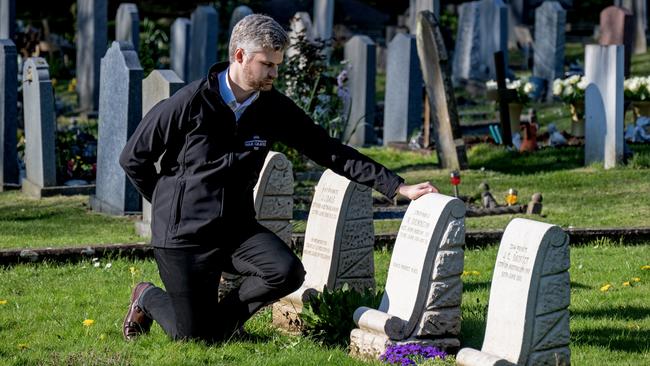
While many of the graves at the Australian Military Cemetery in the village of Harefield in Middlesex just outside of London, fallen into disrepair, Dickinson’s has never been forgotten, a reminder of the ultimate sacrifice of human lives lost.
Engraved on her neat white portland headstone are just three words, “Peace, perfect peace”. A spray of purple European Periwinkles sits beside her.
On Anzac Day Dickinson, and the other 114 soldiers and army personnel who lay beside her, will be honoured in a solemn Dawn Service at St Mary’s Parish and in the churchyard, to commemorate the landings on the Gallipoli Peninsula in Turkey by allied forces on 25th April 1915.
“Ruby felt compelled to leave her home after training at the Lister Private Hospital in NSW and five days after enlisting, she spent four months working at the 3rd Australian General Hospital in Lemnos, a Greek island near Gallipoli,” said Max Dutton, heritage and interpretation officer with the Australian-Government funded Commonwealth War Graves Commission that maintains the burial ground.
“I always look for Ruby, our only nurse, when I come here and imagine the last words her parents said to her, ‘peace, perfect peace,’ and how far away they were from their daughter.
“Should any family ever come to see Ruby, we want to make sure they can see she is looked after in the best possible way.
“Her name and all the soldiers’ names must never be forgotten.”
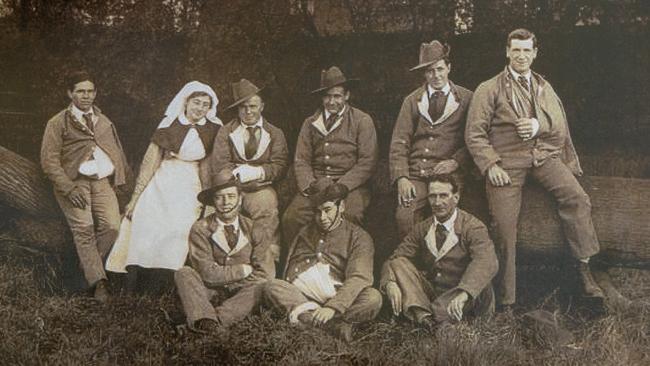
Harefield has a strong affection for Australia. The cemetery is on land once owned by Australian expat Charles Billyard-Leake who donated his manor to the Australian government to use as a military hospital.
More than 50,000 Australian troops passed through the military hospital and for the three years Ruby was a staff nurse, she steadfastly tended to thousands earning the sobriquet among her patients as “a bonzer.”
After the evacuation of Gallipoli in December 1915, Dickinson, along with the other 3rd Australian General Hospital staff moved to Egypt.
During her time in Lemnos and Egypt, her nursing skills were recognised as she was elevated in charge of the nursing staff on the HMAT Seang Choon in August 1916 transporting troops back to Australia.
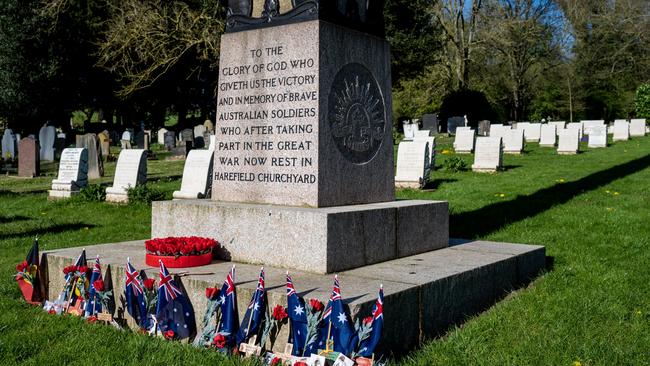
In early 1917, she returned back overseas and initially spent some time with the 3rd Australian Auxiliary Hospital in London. She rejoined the 3rd Australian General Hospital when it moved to Abbeville in France, where she developed a middle ear infection and was transferred to Southwell Gardens Hospital for nurses in London.
After nearly two months, Dickinson resumed her duty at the 2nd Australian Auxiliary Hospital in Southall and a week later was transferred again to the 1st Australian Auxiliary Hospital here in Harefield. It was here that she contracted pneumonia.
On the 23rd June 1918, she was transferred to the Southwell Gardens Hospital for nurses where she died from pneumonia caused by Spanish flu later that day, aged 32.
“It is a privilege for us to look after Ruby, the Australian troops and army personnel whose names must live on,” said Mr Dutton, 30.
“In the corner of this foreign field, that is forever Australia.”
More Coverage
Originally published as Anzac Day 2023: Prince William’s touching tribute in Hyde Park




